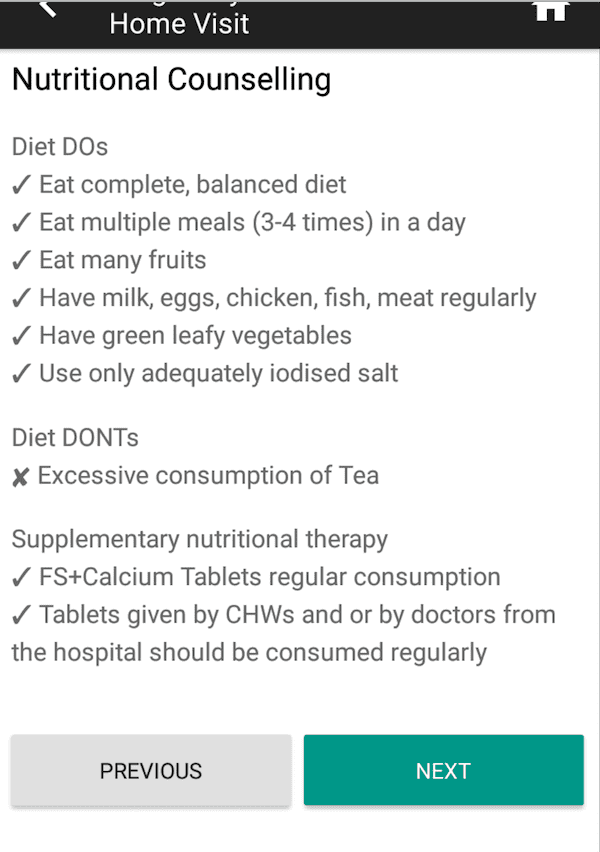Calcutta Kids — Avni for maternal and child health program
Last updated on: November 06, 2019 by
Calcutta Kids is a public health organization providing health services to the underserved women and young children in the Kolkata slum area of Fakir Bagan. They provide preventive services, complemented by effective curative care when required. These services are provided primarily by trained Community Health Workers (CHW). Calcutta Kids (CK) provides a whole range of services for women health, pregnancy and child health — which has been very well detailed here. CK runs a comprehensive program where continuous service is provided to their clients.
Until two years back CK was using a data management system (MIS) for the services delivered. This MIS was also used to - generate the schedule of work for CHWs, derive program insights and prepare impact/activity reports.
The MIS in use was a custom solution, i.e. developed specifically for CK. The system required ongoing changes to adapt to the health program. This required CK to arrange for funds to continuously upkeep the system. This was expensive. Apart from this, there was another major issue — the system was not accessible to the CHWs in the field.

Avni implementation as a replacement of existing MIS was envisioned to empower the CHWs when they were servicing the beneficiaires and CK moving to a platform managed by Samanvay at much lower costs.
Some of the key aspects of this implementation of Avni were:
Modelling CK programs onto Avni
In Avni, one can define multiple programs. Three programs were defined — pregnancy, child and mother. A woman can be moved between mother and pregnancy program depending on whether they were pregnant or not. A child can be enrolled in the child program at birth or if they come newly into Fakir Bagan (program area). The flexible data model offered by Avni allowed for exactly translating the programs as they exist in the real world. (Avni in fact has been designed to achieve this for all field programs).
App available in the field instead of printouts, registers and forms
CHWs at CK, completely did away with the paper forms. This allows for program designers to ensure that each CHW interaction with the beneficiary can be modelled into the app — to standardise service quality. In Avni — the CHW’s interaction with beneficiary is supported via a designed form flow that brings up only the right questions, right counselling topics, displays necessary computed information (e.g. referral advice based on complete data), and highlights data input mistakes.
Counselling guidance for health worker

Visit scheduled for health worker

Bringing data from old system into new one
Bringing on all the data from older system to a new one can be quite challenging. Such data migration in simple scenarios involves providing data to the new system in the format that it can accept. But for large data sets that has been in use for years, it is difficult to prepare data in the expected format manually, because the data-formats of the new system is quite different from the old system. Avni uses a unique approach that makes it possible to map two complex data formats in an excel file - instead of transforming the input format.
Generic product like Avni over a custom solution
Avni reduces the software development cost to the minimum, for its customer - because the product, its hosting infrastructure are shared resources. Avni is funded via philanthropy - allowing funders to contribute a product to the ecosystem. Customers of Avni paying only for implementation of their own configurations.
Credits for icons icon made by — www.flaticon.com/authors/freepik and www.flaticon.com/authors/monkik — from www.flaticon.com